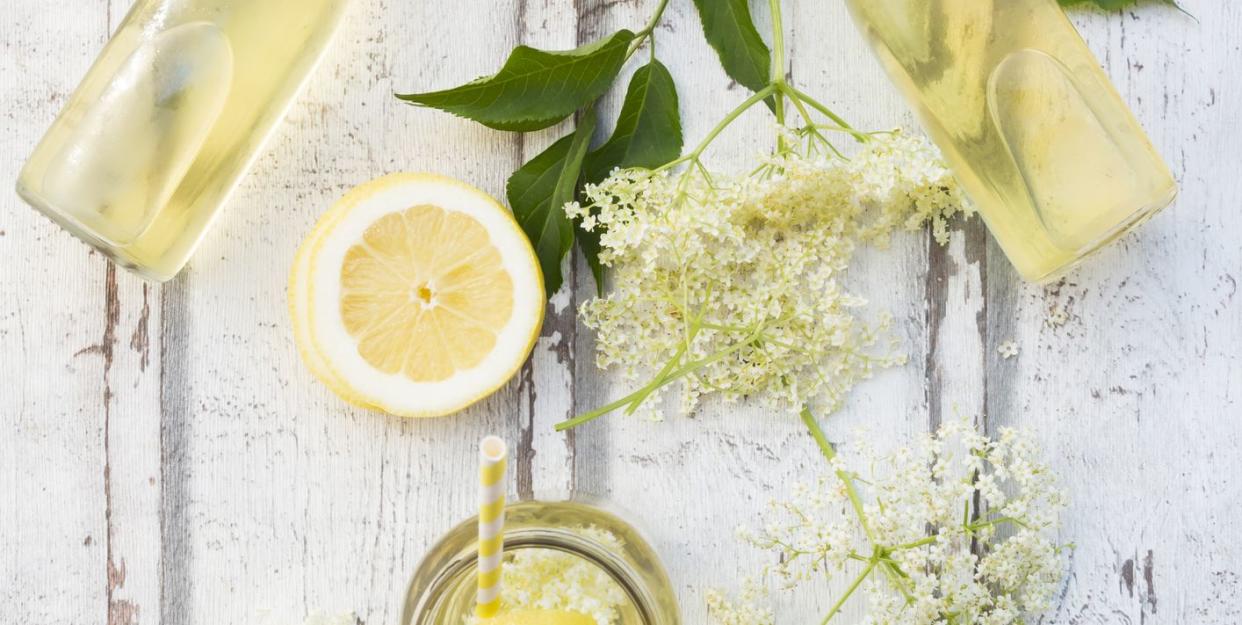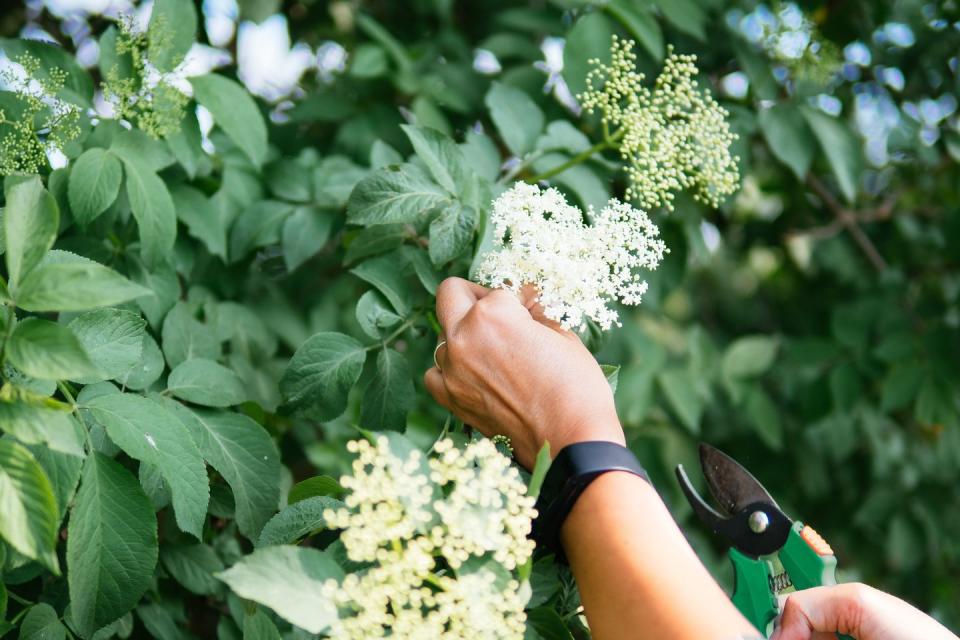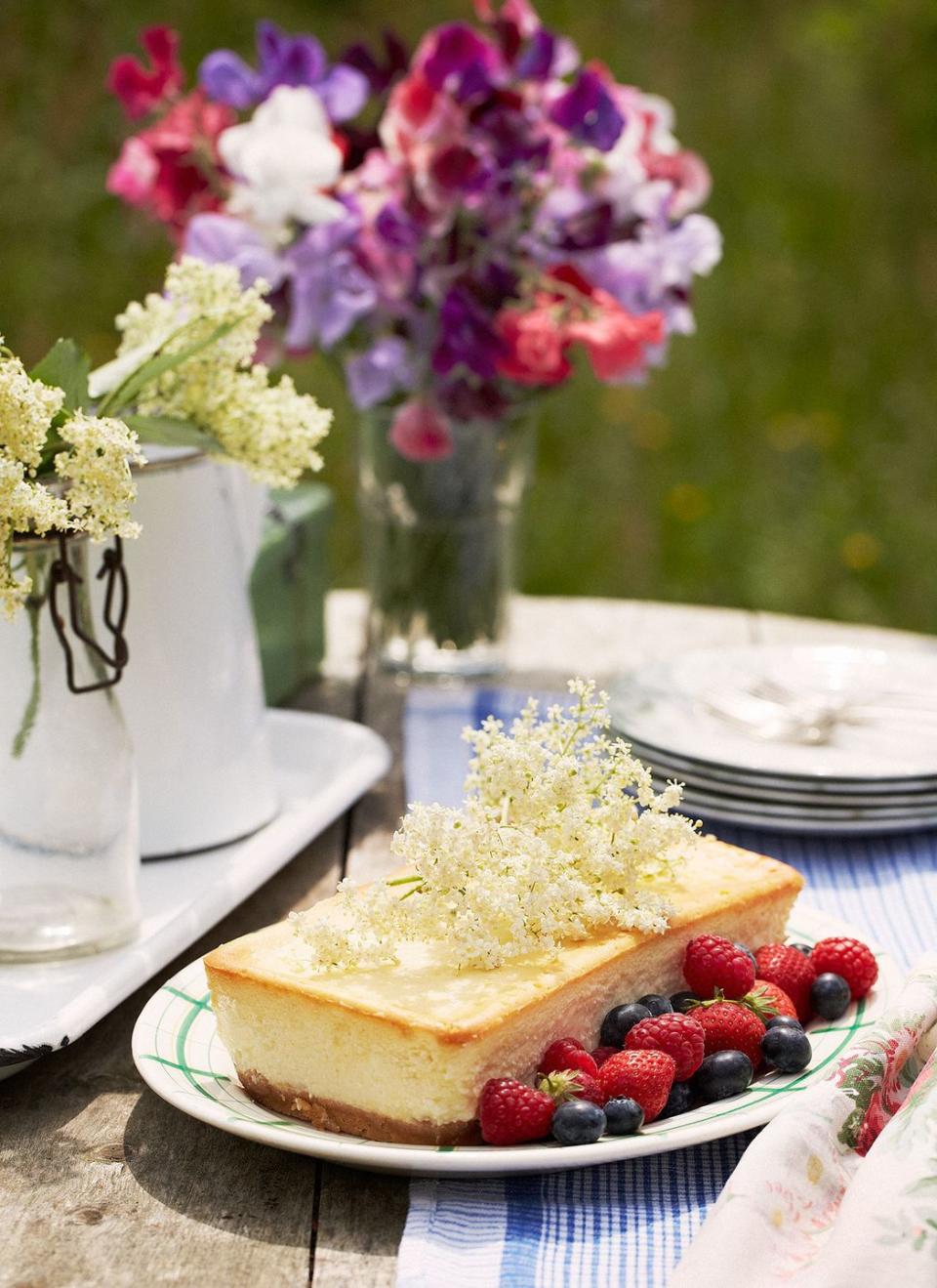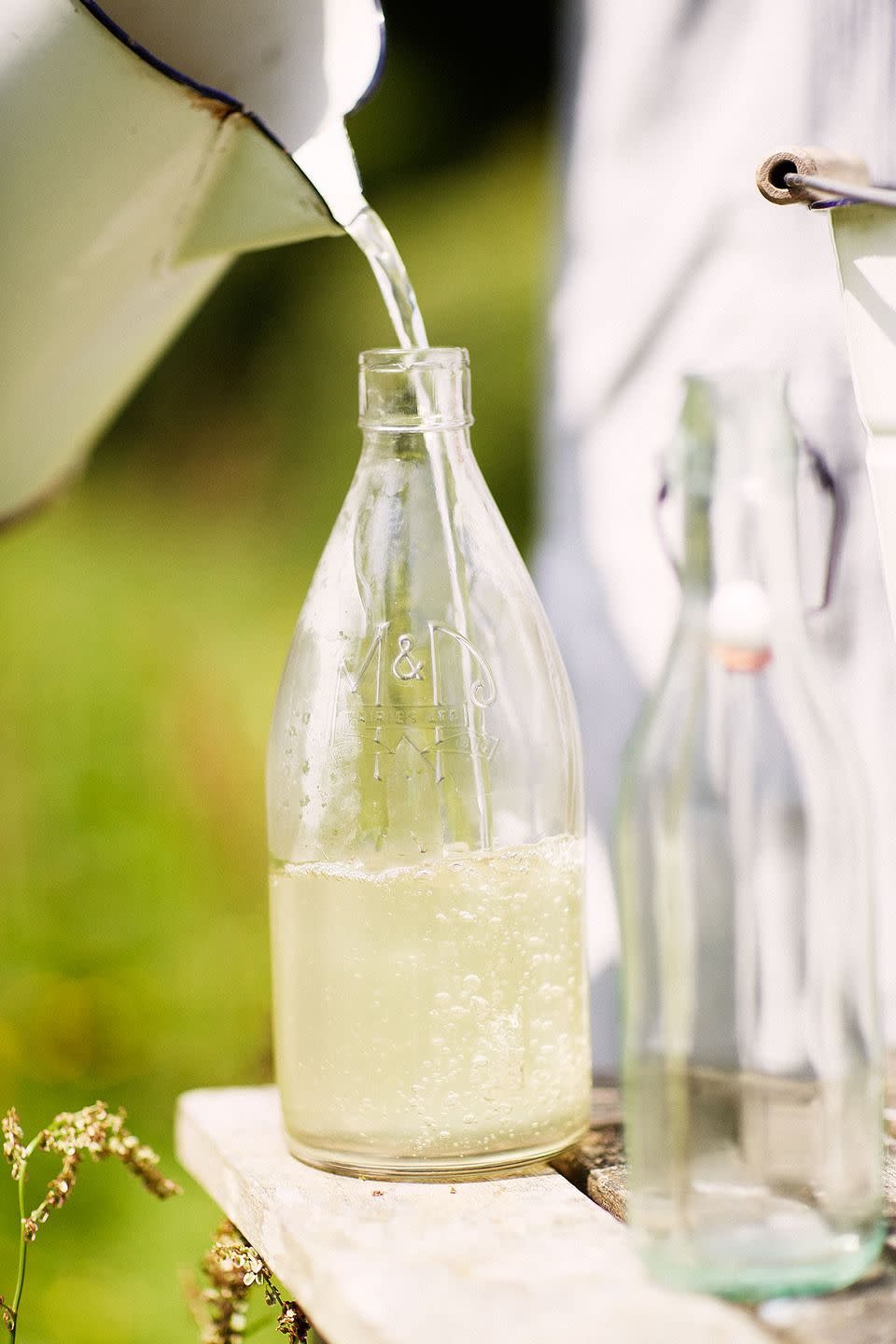Everything you need to know about elderflower: foraging, harvesting, drinking and eating

Frothy and fragrant, creamy-white elderflowers coming into bloom are heralded as the start of the summer. But they’re not just pretty – they are fresh and free produce – so go foraging and experiment with some refreshing and light elderflower food and drink recipes.
How to harvest elderflowers
Expect to see elderflowers (Sambucus nigra, or common elder) flowering from May to June; exact timings depend on the weather. The mild winter should make for a bumper crop in 2019.
Elders are large, bushy shrubs or small trees, and can grow to six metres. A coloniser, they grow in city and countryside, favouring hedges, footpaths, motorway banks, railway lines, derelict land and domestic gardens. The blooms are flat-headed sprays of hundreds of tiny, five-petalled, creamy-white flowers with prominent stamens.

Tips for picking elderflowers
You must ask the landowner’s permission before picking
Find elder trees that aren't by a busy road
Avoid flowers lower down that dogs or foxes may have peed on
Avoid any that smell of urine, the smell means they’re past their best
Choose a dry, sunny morning before the insects harvest the flowers’ pale yellow pollen
Snip off the flower heads with as little stalk as possible so the plant is not damaged
Gently drop the flowers into a large bag
Before using, pick off any insects but don't run the flowers under the tap or you'll wash the natural yeasts off
Use the flowers as soon as possible
Elderflower recipes
1. Elderflower champagne
My favourite is elderflower ‘champagne’: frothy, fruity, floral alcoholic fizz! The flowers’ natural yeasts supply the bacteria to feed on the sugar and turn it into alcohol. See elderflower champagne recipe below.
Method
Pour five litres of cold water into a clean pan or bucket. Stir in 500g of granulated or caster sugar until dissolved.
Drop in 10 elderflower heads and stir to submerge.
Add the zest and juice of one unwaxed lemon and 2tbsp white wine vinegar.
Stir, then lay a clean tea towel over the bucket and leave for 24 hrs, stirring occasionally.
After 24 hours, pour the liquid through a sieve to remove the detritus, then pour through a funnel into reused screw-topped plastic bottles. Don’t use glass bottles because as the pressure of the fermenting fizz increases, they can explode!
Leave the bottles for at least two weeks.
Pick elderflowers from several different trees, leaving plenty to develop into black, glossy elderberries, an important autumn food source for birds.
The bottles will become more rigid as the fermenting causes carbon dioxide to build up. You can unscrew the tops a little (carefully!) to release some of the pressure. After two weeks you can drink it, and it'll be around 3% alcohol, depending on how your fermentation went. It’s difficult to determine the alcohol content of home-brewed drinks without specialist equipment so don’t drive, to be on the safe side.

2. Elderflower cordial
Elderflower cordial is the alcohol-free alternative.
Method
Zest and slice three unwaxed lemons and one unwaxed orange, and place in a saucepan with 2kg granulated sugar and 1.5 litres cold water. Gently heat until the sugar dissolves.
Add 25-35 elderflower heads, stalks removed, and stir to submerge. Add 1tsp citric acid (optional), which helps to preserve the cordial.
Cover the pan and leave to infuse for at least 24 hours. Meanwhile, sterilise glass bottles by washing in hot, soapy water and leaving to dry in a low oven, or putting them through a dishwasher cycle.
Line a colander with muslin or a clean tea-towel, and place over a large bowl or pan. Ladle in the cordial to filter it. Discard the flowers, lemon and orange. Pour the filtered cordial into a jug and use a funnel to fill the bottles. Seal and label.
You can, of course, dilute the cordial with still or sparkling water, or add it to sparkling wine, gin and tonic, or vodka and soda. Alternatively, use in gooseberry or rhubarb dishes – crumbles, cakes, ice creams, jams – as the flavours work well together. Use cordial instead of lemon juice and sugar to drizzle over warm sponges.

3. Elderflower fritters
For an impressive starter or snack, how about elderflower fritters? Make a batter from 100g flour, 2tbsp oil, 175ml sparkling water and 1tbsp sugar. Heat a pan of oil. Dip the elderflowers into the batter then gently fry until crisp and golden, then lift out and dip into caster sugar, or drizzle with honey.
And if you’re waiting for the flowers to bloom, you can pickle the green unopened flower buds to use like capers.
More elderflower recipes:
4. Fluffy homemade elderflower marshmallows
6. Homemade elderflower liqueur recipe
The above video was part of our Celebrate At Home with Country Living virtual event which took place on 9th and 10th May 2020, alongside an online Artisan Pop-Up Market. Please note that both events are now over and any mentions of them in the video no longer apply.
Like this article? Sign up to our newsletter to get more articles like this delivered straight to your inbox.
You Might Also Like

